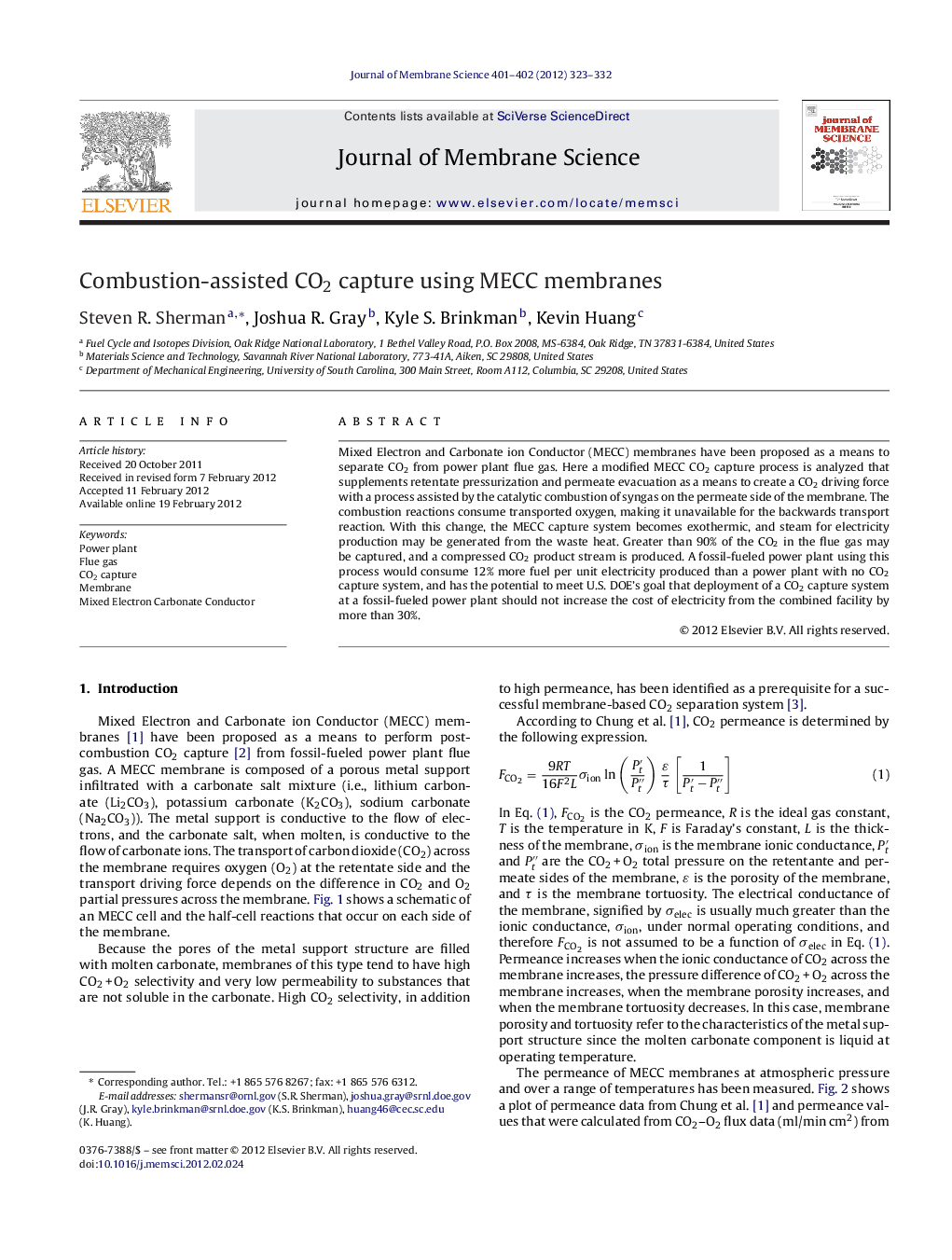| Article ID | Journal | Published Year | Pages | File Type |
|---|---|---|---|---|
| 635018 | Journal of Membrane Science | 2012 | 10 Pages |
Mixed Electron and Carbonate ion Conductor (MECC) membranes have been proposed as a means to separate CO2 from power plant flue gas. Here a modified MECC CO2 capture process is analyzed that supplements retentate pressurization and permeate evacuation as a means to create a CO2 driving force with a process assisted by the catalytic combustion of syngas on the permeate side of the membrane. The combustion reactions consume transported oxygen, making it unavailable for the backwards transport reaction. With this change, the MECC capture system becomes exothermic, and steam for electricity production may be generated from the waste heat. Greater than 90% of the CO2 in the flue gas may be captured, and a compressed CO2 product stream is produced. A fossil-fueled power plant using this process would consume 12% more fuel per unit electricity produced than a power plant with no CO2 capture system, and has the potential to meet U.S. DOE's goal that deployment of a CO2 capture system at a fossil-fueled power plant should not increase the cost of electricity from the combined facility by more than 30%.
► A CO2 capture process using MECC composite membranes is described. ► Detailed simulation of the process is performed to determine an efficient process configuration. ► A power plant using this process would consume 12% more fuel per unit electricity than baseline. ► Membrane cost is a critical issue in the economic performance of the process.
